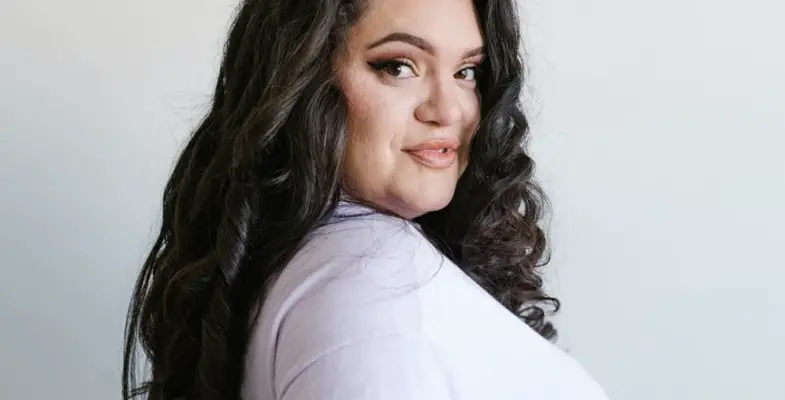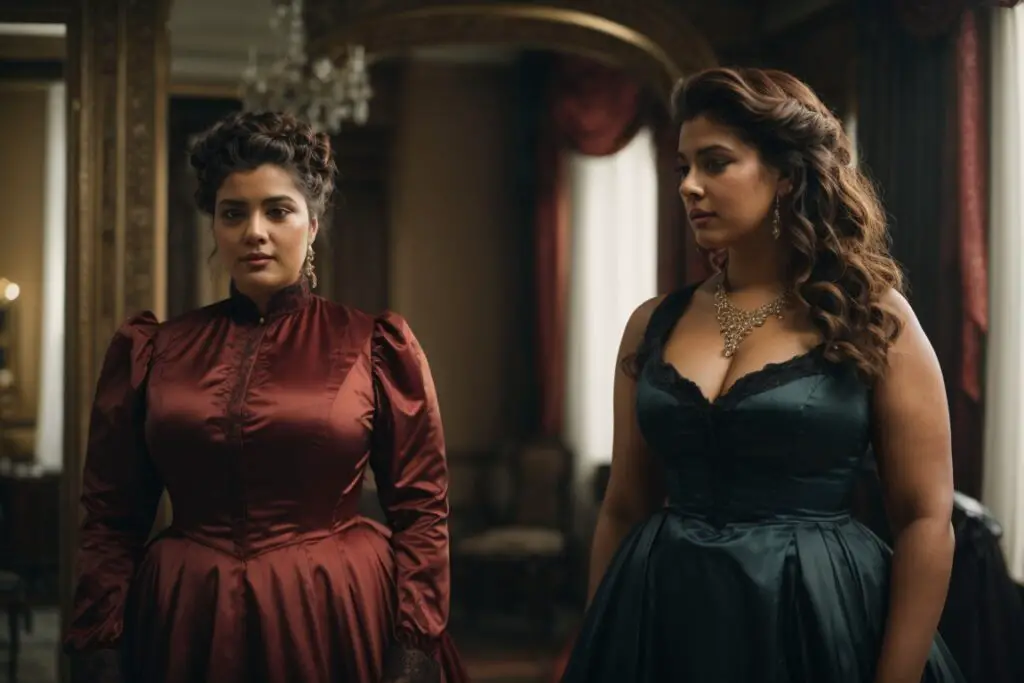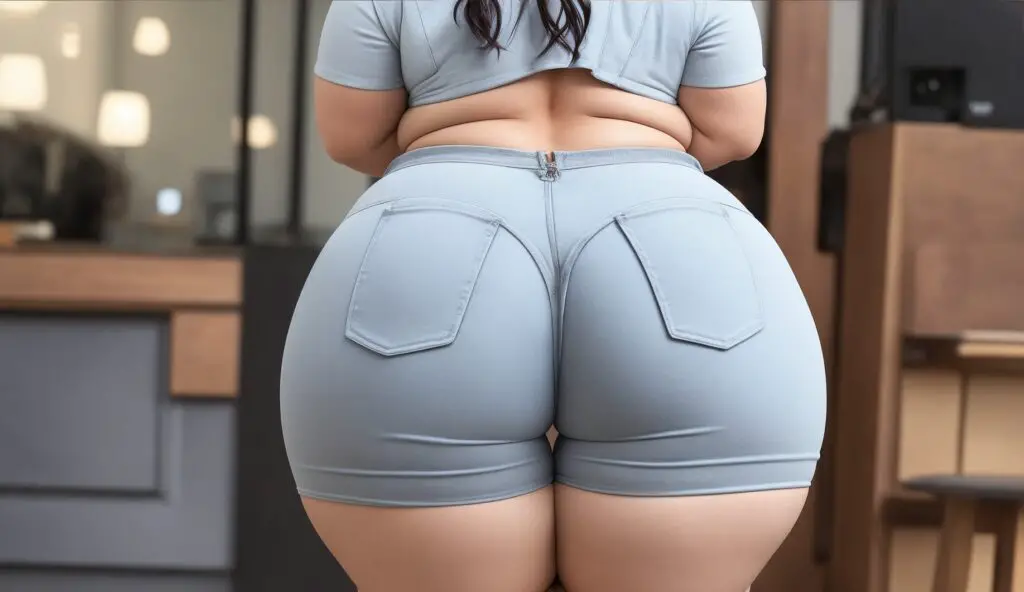The fashion and modeling industries have evolved to include some commendable progressive changes. Before the rise and surge of plus-size models, the average model weighed 90-112 lbs., which was extremely small for a middle-aged woman. With the introduction of more plus-size models, one would ask, what is the weight range for plus-size models?
Plus-size models weigh between 161-205lbs on average. They are thicker, exceedingly more voluptuous, and curvier than their regular-sized counterparts and that’s what makes them amazing!
There are several inferences we can make based on the above figures. First, that the weight range amongst plus-size models is larger than regular-sized models. There is an astounding range of over 40 lbs! Whereas regular-sized has a smaller range of up to 20lbs. Secondly, there is a huge gap between the average sizes of the two types of models which makes women who fall within this gap category largely unrepresented when it comes to models.
For centuries now, women have always been subjected to harsh and unrealistic requirements about their body physiques. They were considered too fat when they had chubby cheeks or chafing thighs and were continuously bashed until they lost the excess pounds. Ironically, it was not always the case, as, during the pre-Victorian era, women were larger and more voluptuous.
In those times, the more one weighed the more they were considered wealthy and pompous. Being large gave women a sense of pride and esteem. Women were proud to have fuller breasts, wider hips, and thighs. There was no air of guilt or shame about it. Wealth was quantified by how much you had to eat! If you could afford food, deserts, and all manner of snacks, you indeed had some money and even more to spare.
Gradually, with the changes in the economic tide, wealth and prestige began to be quantified by how slender and thinner you looked as you could now afford to hit the gym and have a personal trainer. This was considered a luxury that many could not afford. This heralded the strongly entrenched beauty ideals of thin women and complete disgust of larger-bodied women. At first, this was purely on the grounds of economic class, however, it became reinforced to the very fabric of society. Thin was always viewed as supreme- whether or not it was unhealthy was an entirely different question and in the world of beauty, it did not matter.
Once plus size models began to appear on the modeling scene there was a lot of backlash and criticism for numerous reasons. First, from the plus-size community itself, because the girls who were cast and termed to be plus-size were not in fact plus-size. Secondly, fashion and beauty idealists believed that accommodation of ‘fatter silhouettes’ was an affront to the highly esteemed beauty and fashion standards that preferred thinner women to thicker women.
Gladly, all these misconceived notions are gradually fading away and more vibrant, positive, and inclusive ideals are being embraced.
The Weight Factor
Weight entails both muscle mass, fat, and water. Many people don’t quite acknowledge this and perceive being weighty as being fat. Other factors that affect one’s weight include one’s bone structure and also height.
Some individuals have heavier bones than others, this is usually the case because of varying genetic composition. Height also has an impact on weight, to a mild degree. The taller you are the more probable you weigh more. These and other factors such as lifestyle choices, food, and diet, how frequently you work out and train cumulatively influence an individual’s weight.
It is, therefore, inaccurate to conclude that those who appear smaller weigh less, and conversely a person who appears bigger weighs more unless you are speaking of the polarized extremes. Someone may weigh more simply because they carry more muscle tone or even water in their bodies and not necessarily because they are fat. The growing research and studies on weight and how it interacts with other factors have rendered weight a non-predominant factor when it comes to modeling- especially plus-size modeling. This is a good thing.
If you think about it, there are no conclusive findings that you can make based on one’s bodyweight alone. You cannot assert that one is healthier because they weigh less, you can’t even assert that particular weight is ideal for a particular age bracket without factoring other variables into the equation. Progressively, thorough studies on the subject have led to the preference of other factors due to their more definite and accurate findings. Take for instance Body Mass Index (BMI). which simply put, is a weight to height ratio criterion that gives more accurate results on whether one is overweight, underweight or normal.
So why did weight continue to be one of the more significant factors when it came to modern-day modeling? The answer may surprise you!
The Nexus between Beauty and Weight
Until recently, weight was a fundamental consideration when it came to modeling. The number on the weighing scale had the power to dictate whether or not you would qualify for a modeling career. This led to extreme measures from women, with most opting to starve themselves to drop the pounds and be cast as models.
You most probably have heard stories of teenagers and young ladies suffering from numerous eating disorders. The ill tendency to throw up after every single meal day after day after day to become stick thin and weigh less became commonplace among this age bracket. As opposed to a healthy well-balanced meal with the necessary carbs, proteins, vitamins, and minerals, these ladies preferred plain water and supplements. The common calorie counting and no fat diet practices increased.
Several struggled with failing health. Many would easily pass out or become so weak that they were admitted to hospitals. The whole misconceived notion that food was an enemy was readily bought by many women, especially the younger ones. Sadly, the extreme measures taken had severe effects in some cases claiming the lives of these girls and in others completely sabotaging their health. What is direr, is the physiological and emotional suffering inflicted on these ladies. Their misconceived perception that they were not small enough to be pretty is heart-wrenching.
Due to current trends in media and on the celebrity scene, the popular size 0 frenzy is still yet to be overcome. However, there are great milestones made to promote self-love, self-care, and body inclusivity in the recent decade.
Plus-Size Models and the Weight factor
When it comes to the new and evolving plus-size modeling industry, weight is not an essential factor while enlisting models. This seems rather obvious as it is expected of plus-size women to be heavier, so why cross-check? Quite notably, this is to ensure more inclusivity of the various plus size silhouettes which consist of a wide range of sizes, heights, proportions, and unique features.
To demonstrate the range of sizes and weight of plus-size models in the industry today, here’s a list of some of the most famous plus-size models and their weights.
1. Ashley Alexis – 138 lbs.
2. Ashley Graham – 201 lbs.
3. Barbie Ferreira – 216 lbs.
4. Bishamber Das – 242 lbs.
5. Candice Huffine – 203 lbs.
6. Fluvia Lacerda – 181 lbs.
7. Iskra Lawrence – 194 lbs.
8. Kate Wasley – 194 lbs.
9. Nadia Aboulhosn – 160.9 lbs.
10. Paloma Elsesser – 187 lbs.
11. Robyn Lawley – 196 lbs.
12. Tabria Majors – 216 lbs.
13. Tara Lynn – 216 lbs.
What Matters
As far as plus size modeling goes the following are the most essential factors to take into account.
1. Natural Beauty
This includes both your facial features and general physique. A majority if not all plus-size models seem to have striking facial features. From their chiseled jawline to naturally well-defined cheekbones, to striking blue, green, brown, or large white eyes, to dimples, freckles, or simply a warm inviting smile.
Modeling agencies and fashion brands look for unique physical attributes that can give them a cutting-edge appearance. Your face is pivotal to this. Additionally, they consider whether your look is charming, playful, sexy, tom-boyish, elegant, or innocent and decide whether they can work with the same or not. Your natural hair color or even dyed hair also has a substantial bearing. How close or wide apart your eyebrows sit, how deep your eyes are, how pointed, narrow, or long your nose is, how high your cheekbones are etcetera are all taken into account.
Of course, you can’t quite curate a look for your face, you simply work with what you have, unless you are willing to go under the knife. The simplicity makes it all the better because you can proudly wear your face without conforming to any particular ideals.
Other unique body features include wide hips, long or short legs, voluptuous breasts, pretty hands, a long neck, and the list goes on and on. The beautiful thing about the recent surge and embrace of body inclusivity campaigns is that nobody is deemed ideal or more beautiful than another. All silhouettes are treated equally and are considered beautiful. This does a whole lot in elevating the pressure to conform to certain beauty standards as was the norm before. You therefore can be proud of how you look as a plus-size woman or model.
2. Dress Size
This is perhaps the most important measurement when it comes to plus-size models. Particularly because you can only be retained by agencies or fashion houses whose clothes you actually can fit into. With the increase of plus-size collections and size ranges, this should not be a problem.
However, some brands only feature ‘smaller bodied’ plus size women whose silhouettes are not in any way representative of the majority of plus size women. In such cases, a plus-size model’s dress size can be limited to very few options which consequently bar many plus-size models from modeling particular brand collections.
3. Bust-waist-hip Ratio
This is one of the other paramount considerations especially when it comes to swimming wear, bikini, or lingerie photoshoots. Plus size women are generally expected to be curvy and voluptuous around their lower body proportions. The larger their hips or busts are to their waist, the better. It is a general unspoken rule that to be deemed curvy, the 10-inch rule applies. This is whereby your waist to hip ratio or waist to bust ratio differs by approximately 10 inches – the waist being the smallest body part.
Again, plus-size models are generally expected to have flat and even-toned bellies. This is a widely publicized industrial standard that is rarely blatantly spoken of. You will find only a handful of plus-size models who have wide bellies and are at the top of the food chain. The majority have slimmer and flat bellies and those are the ones that land magazine covers and high-profile runways and catalogs.
4. Height
This feature is only of great concern when it comes to mainstream runway projects. Usually a 5’8” to 5’9” is preferred. However, for other modeling projects, we have famous plus-size models who have made waves while just being 5’2” – Nadia Aboulhosn for example. This bombshell is not intimidated by her petite appearance and isn’t intimidated to work alongside other taller plus size models. She rocks every photoshoot like a boss!
5. Age
Some agencies and brands impose age restrictions. Typically, they accept ladies between the ages of 16 to 28 at the entry level. However, there are brands that are more devoted to representing a more pragmatic image of plus-size women and therefore do not have any age restrictions. As long as you are pretty and confident about your body image, you can apply.
However, this kind of modeling contract is rarely considered ‘professional’. Their purpose is primarily to showcase clothes for retail purposes and how it fits on different plus size silhouettes – there is rarely any need for intense skill development, modeling specialization, extensive hair and makeup or props in these runway shows, photoshoots, or commercials.
Conclusion
Weight is just but a number. It has no defining effect on current beauty ideals and therefore has since ceased to be a predominant factor when it comes to plus-size modeling. Other factors such as dress size, body proportions, height, and weight are commonly used to distinguish among plus-size models instead.



